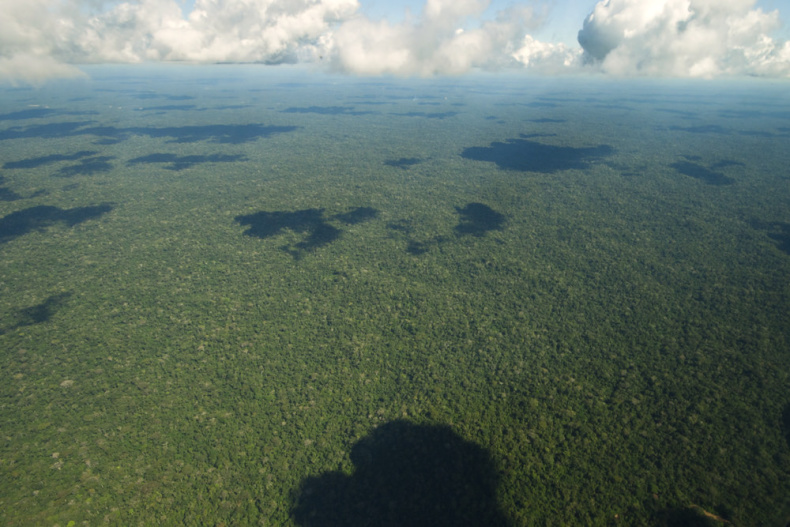
by DGR Colorado Plateau | Dec 5, 2015 | Indigenous Autonomy
By Fionuala Cregan / Intercontinental Cry
Image by Toni Fish/flckr. Some Rights Reserved.
For most Peruvians it was a Sunday like any other; but in the Wampis community of Soledad, it was a historic day. On November 29, the Wampis nation declared the formation of the first Autonomous Indigenous Government in Peru.
Spanning a 1.3 million hectare territory – a region the size of the State of Connecticut – the newly elected government brings together 100 Wampis communities representing some 10,613 people who continue to live a traditional subsistence way of life through hunting, fishing and small scale agriculture.
While the newly-formed government does not seek independence from Peru, its main role is to protect Wampis ancestral territory and promote a sustainable way of life that prioritizes well-being, food security and a healthy harmonious existence with the natural world.
This is no small task in today’s world; but it is nonetheless a necessary one, as Andres Noningo Sesen, Waimaku (Wampis Visionary), explains in a recent email to the New Internationalist. Due to the advance of mining and oil companies, illegal logging and palm oil plantations, the Wampis have found their livelihoods increasingly under threat.
We will still be Peruvian citizens but now we will have our own government responsible for our own territory. This will allow us to defend our forests from the threats of logging, mining, oil and gas and mega dams. As every year goes by these threats grow bigger.
This unity will bring us the political strength we need to explain our vision to the world and to the governments and companies who only see the gold and oil in our rivers and forests. For them, too often we are like a small insect who they want to squash. Any activity planned in our territory that will affect us will now have to be decided by our own government which represents all our communities.
The new Government consists of a President, Vice-President and an 80-member parliament with members elected by each Wampis community through their own local assemblies. Eventually, it will have 102 members. The basis for governance is the Statute of the Autonomous Territorial Government of the Wampis Nation, the result of a long process that took place over several years with the Wampis nation holding over 50 community meetings and 15 general assemblies to develop and debate the Statute which lays out their vision for the future in all areas of life including religion, spirituality, education, language and recovery of ancestral place names.
The Statute places special emphasis on the rights of women stating,
The Wampis nation will work to achieve true gender equality. The Government will work at all levels to promote a campaign to end all forms of violence against Wampis women… respect for women and unity takes precedence over cultural practices, specifically polygamy which took places in other historical contexts and which today can lead to social conflicts… The Wampis Government will prioritize access to third level education for women in different universities throughout the country.
The Statute also emphasizes the obligations of the Peruvian state to respect the rights and autonomy of indigenous peoples and nations. Amongst other principles, the Statute requires that any activity that could affect Wampis territory must secure the Free, Prior and Informed Consent of the Wampis nation. Specifically, this means that the Government of Peru cannot give out any further concessions that allow oil or mining companies to enter Wampis territory without a prior consultation process.
Currently, the Wampis are in the process of resisting such a concession that was granted, amongst others, to Afrodita S.A. for gold mining activities in a bi-national protected area along the border area with Ecuador. Since 2001, Afrodita has maintained a presence in this part of the Peruvian Amazon and in 2010 had its license suspended in the region of Cordillera del Cóndor due to the sustained resistance of indigenous communities living along the Cenpea and Maraño rivers. Both rivers suffered from severe mercury and cyanide stemming from mining activities in the region.
This, according to the newly elected Pamuk (first President) Wrays Pérez Ramirez, will be the largest challenge for the Autonomous Territorial Government of the Wampis Nation. The new president told Intercontinental Cry by phone:
We know that it will be difficult to get the National Government to support us and recognize our territory. It will seem unacceptable to the Government to have to consult us regarding any activity that could affect our territory. We know that it is going to be hard work but we are prepared. We are not going to stay silent not least when we have legal backing from national and international legislation regarding our right to self-determination and free, prior and informed consent. It will be difficult, but not impossible.
“The election has not taken place behind the Government’s back,” he adds. “The Governors of Amazonas and Loreto Province were invited to the summit as well as the Minister for Environment, Energy and Mining and the Minister for Culture but none attended. At the local level we have support and will work closely with, amongst others, the mayors of Rio Santiago and Morona who agree with our decision.”
The historic decision of the Wampis nation will be a source of inspiration for indigenous nations throughout Latin America. As a model for sustainable development and the preservation of some of our last remaining forests, it should also inspire world leaders as they meet at the COP21 Climate Summit in Paris this week.
“While the Peruvian government and other governments are in Paris talking about how to protect tropical forests and reduce contamination, we are taking concrete actions in our territory to contribute to this global goal,” says the newly elected Pamuk.
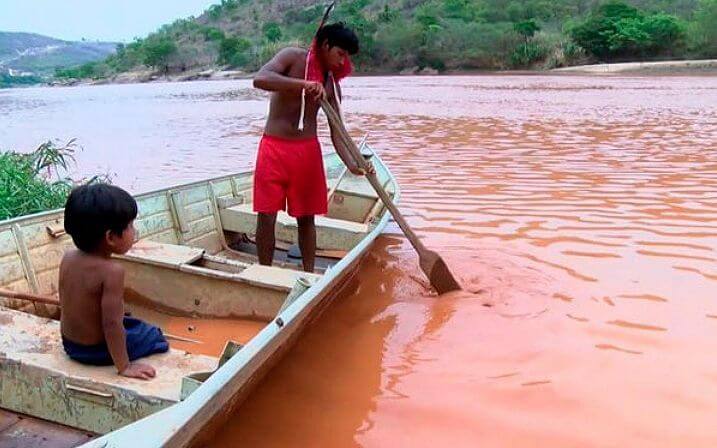
by DGR Colorado Plateau | Dec 3, 2015 | Biodiversity & Habitat Destruction, Indigenous Autonomy
by Marcela Belchior / Adital via Intercontinental Cry
What would initially appear to be the end of the line for the culture and survival of the Krenak indigenous people, impacted by the pollution of the Rio Doce, from the Mariana tragedy, in southeastern Brazil [state of Minas Gerais], could rekindle a 25 year struggle. After being left unable to live without the water of the river, the Krenak population is mobilized around a possible solution for the continuity of the community: to expand the demarcated area of the indigenous territory in the region and to migrate to a new location.
In an interview with Adital, Eduardo Cerqueira, member of the Indigenist Missionary Council (CIMI), Eastern Regional office, which comprises the states of Minas Gerais, Espírito Santo and the extreme south of Bahia, affirms that, as a way to resist the tragedy, the Krenak community [is calling] on the federal government to expand the demarcated area into 12,000 adjacent hectares, embracing the region where the State Park of Sete Salões, one of the Units of Conservation of nature belonging to the Government of Minas Gerais, is currently located.
“We find the strategy interesting, given that the existing area no longer provides conditions for survival. Something must be done”, attests Cerqueira. At present, the demarcated area of Krenak territory covers 4700 hectares. In this zone, extending more than three kilometers along the Doce River have been impacted and rendered unfit for drinking, fishing, bathing and irrigating vegetation in the vicinity, in the municipality of Resplendor, where 126 Krenak families live.
The State Park Parque de Sete Salões was created in 1998, and includes the municipalities of Conselheiro Pena, Itueta and Santa Rita do Itueto, corresponding to one of the largest remnants of Atlantic Forest in eastern Minas Gerais, with mountains, forests and waterfalls. Besides this, the area demanded has potential for indigenous community tourism, receiving visitors and marketing crafts, without damage to the environment.
The territory of the Krenak population, in Minas Gerais, was demarcated in the 1990s, but the entire length of the park was excluded, which today could once again be placed on the agenda. In the early 2000s, the Indigenous people filed a claim with the National Indian Foundation (Funai) and the federal government conducted a technical study on the matter, which to date has not been published. In the opinion of the Krenak, now, the situation is more than appropriate to fulfill the historical demand of the population.
“Various indigenous leaders are concerned about the territorial question. Now, it is a matter of necessity for this concern to be the focus of discussion. (…) This part of the region was not affected by the tailings [pollution],” defends the indigenous advocate. According to the CIMI counselor, since the socioenvironmental tragedy, the indigenous peoples affected have been assisted with emergency support, by means of tank trucks supplying water, transfer of basic food baskets and financial support for the families, which would ensure the community’s survival only in the short term.
“This tragedy was intensified by a period of severe drought. For over a year there has been no rain in the region. Because of this, the tributaries of the Rio Doce are dry. (…) The terrain is not favorable to agriculture. Livestock would be the most common form of indigenous survival, but it is not possible, without water,” explains Cerqueira.
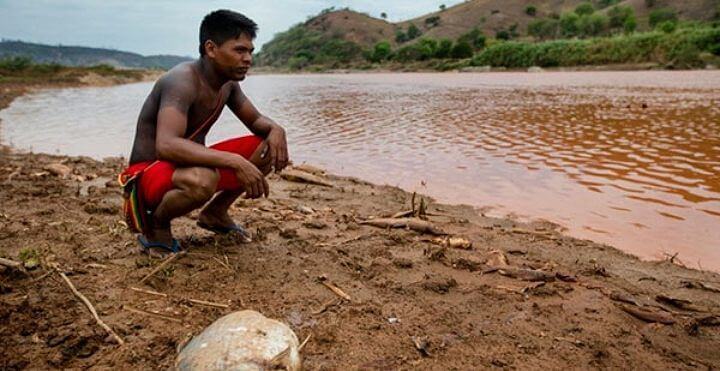
Geovani Krenak laments the death of the Rio Doce: “we are one, people and nature, only one,” he says. Photo: Reproduction.
UNDERSTANDING THE CASE
A torrent of mud composed of mining tailings (residual waste, impurities and [chemical] material used for flushing out minerals) has been flooding the 800 kilometer length of the Rio Doce since November 5, after the rupture of the Fundão dam, of the Samarco mining company. This is controlled by Vale, responsible for innumerable and grave socioenvironmental damages in Brazil, and the multinational Anglo-Australian BHP Billiton, two of the largest mining companies in the world.
In addition to burying an entire district, impacting several others and polluting the Rio Doce, extending through the states of Minas Gerais, Espírito Santo and Bahia, the mud reached the sea over the weekend, even further amplifying the environmental damage, which could take more than two decades before signs of recovery even begin to present. In addition to the destruction of fauna and flora, seven deaths and 17 disappearances have so far been recorded.
KRENAK PEOPLE CLOSE ROAD IN PROTEST
Early last week, representatives of the Krenak indigenous people, whose tribe is situated on the banks of the Rio Doce, interrupted, in protest, the Vitória-Minas Railroad. Without water for more than a week, they said they would leave only when those responsible for the tragedy talk with them. “They destroyed our lives, they razed our culture and ignore us. This we do not accept,” asserted Aiah Krenak to the press.
Considered sacred, in a culture whose cosmological worldview is based on the interconnection between all beings – humans, plants, animals, etc., the river that flows through the tribe was utilized by 350 Indians, for consumption, bathing and cleansing. “With the people, this is not separate from us, the river, trees, the creatures. We are one, people and nature, only one”, says Geovani Krenak.
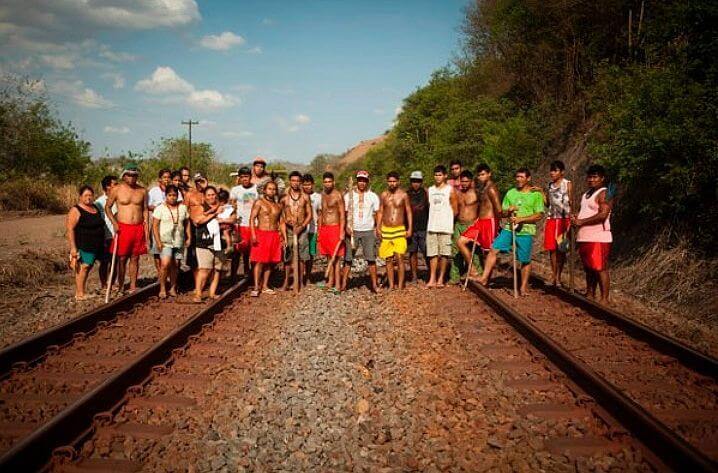
Krenak people protest on the Vitória-Minas Railroad. Photo: Reproduction.
Seated along the tracks, under a 41C. degree sun, Indians chanted music in gratitude to the river, in the Krenak language. “The river is beautiful. Thank you, God, for the river that feeds and bathes us. “The river is beautiful. Thank you, God, for our river, the river of all of us,” the words of shaman Ernani Krenak, 105 years of age, translated for the press.
His sister, Dekanira Krenak, 65 years old, is attentive to the impact of the death of the river affecting not only the indigenous peoples, being a source of resources for many communities. “It is not ‘us alone’, the whites who live on the riverbank are also in great need of this water, they coexist with this water, many fishermen [feed their] family with the fishes,” she points out.
Camped on site in tarpaulin shacks and sleeping mats in the open air, the Indians, now, must also face an unbearable swarm of insects. “It was never like this,” says Geovani Krenak. “These mosquitoes came with the polluted water, with fish that once fed us and that are now descending the river, dead, he reports.
Article originally published in Portuguese at
Adital. Translated to English for Intercontinental Cry by M.A. Kidd. Republished with permission of Intercontinental Cry.

by DGR Colorado Plateau | Nov 21, 2015 | Indigenous Autonomy
INDIGENOUS CUSTODIANS CALL FOR RECOGNITION AND PROTECTION OF SACRED NATURAL SITES
Indigenous custodians from Benin, Uganda, Kenya and Ethiopia have released a powerful new statement outlining the importance of sacred natural sites and governance systems.
Emerging out of a biocultural diversity revival movement that’s starting to build serious momentum across continental Africa, the statement forms the heart of a new report that builds the case for the African Commission on Human and Peoples’ Rights to do its part.
The new report, authored by The Gaia Foundation, African Biodiversity Network and human rights lawyer Roger Chennels, draws attention to the way that sacred natural sites and their community custodians have been systematically undermined and violated since the colonial era. Despite the official decolonization of Africa, this persecution continues today, say the authors, who have extensively documented the renewed scramble for Africa’s land, mineral, metal and fossil fuel wealth and its impact on Indigenous territories.
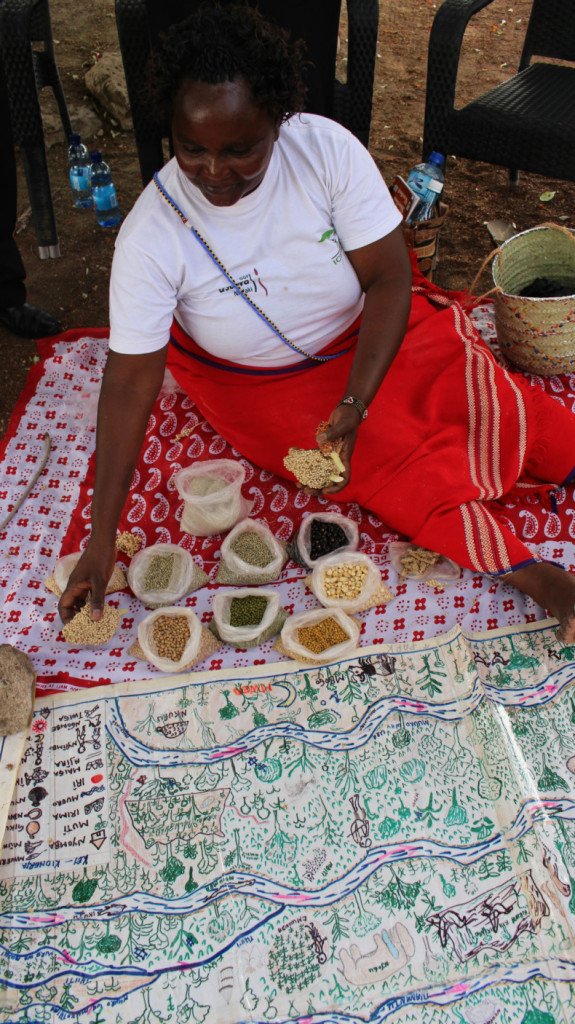
Sabella Kaguna, a sacred site custodian from Tharaka, Kenya, with a map of her ancestral territory and indigenous seeds (Photo: The Gaia Foundation)
Both the custodians and the report’s authors are now urging the African Commission to invoke the African Charter on Human and People’s Rights (African Charter). and protect sacred sites, governance systems and custodians in a ‘decisive policy and legislative response’ to these threats.
SACRED NATURAL SITES
SOURCE OF KNOWLEDGE, CULTURE AND LAW
According to the new report, sacred sites are “Places of ecological, cultural and spiritual importance, embedded in ancestral lands”. They also play an important role in community conflict resolution practices and other traditions central to the cultural life of Indigenous Peoples.In their statement custodians describe the centrality of sacred sites to their existence, writing that “Sacred natural sites are where we come from, the heart of life. They are our roots and our inspiration. We cannot live without our sacred natural sites, and we are responsible for protecting them.”

Sacred site custodians from Bale Ethiopia. (Photo :Tamara Korur)
The custodians go on to outline in detail how sacred natural sites are the primary source of their laws and customary governance systems. Drawing together a list of common customary laws, the custodians demonstrate how these governance systems enable Indigenous Peoples to both protect their territories and maintain their ways of life and identities.
Quoting Beninese custodian Ousso Lio Appolinaire on the relationship between nature and culture, the report’s authors emphasize that a priori laws based upon and derived from the laws of the Earth underpin the great diversity of laws and customs practiced by Indigenous Peoples worldwide.
“In the beginning there was Nature; culture and indigenous knowledge come from Nature. Nature cannot be protected in a sustainable way without the culture of that place. The erosion of culture leads to the destruction of Nature. It is critical to conserve the culture and knowledge of our ancestors for good ecological governance in service of Nature”, says Appolinaire.
The custodians’ are calling for the African Commission to recognize and protect sacred natural sites on the basis that they are the foundations of the governance systems, cultures and values celebrated and enshrined in the African Charter.
The report discusses at length the commitment the African Charter makes to recognizing Africa’s legal plurality, including Indigenous People’s customary governance systems. Laying out a broad vision for an Africa free of colonialism, Articles 17, 18 and 61 of the Charter promote plurality and the traditional cultural values that, for custodian communities, are intimately tied to the existence and health of sacred natural sites.
In order to safeguard these rights, sacred natural sites must be protected, and the customary governance systems connected to them honored, argues the report.
LOSING LAND AND MEMORY
SACRED SITES UNDER THREAT
The custodian’s statement intimates a critical need to protect sacred natural sites in accordance with the African Charter due to the interconnected crises of disappearing knowledge and increasingly devastated ecosystems.
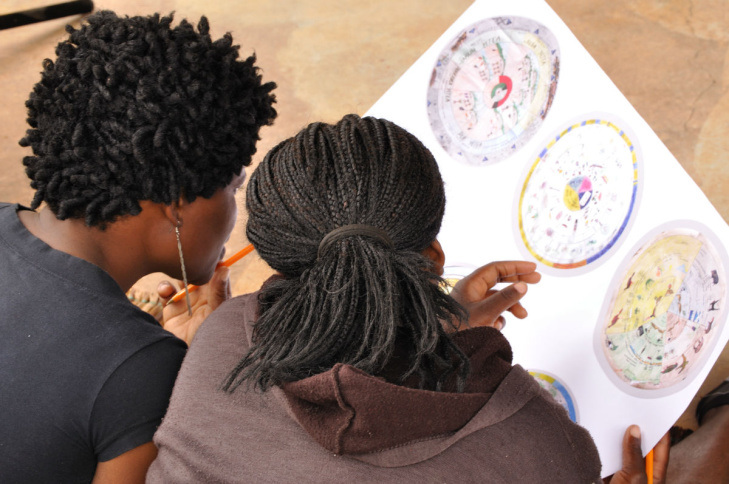
VhaVenda community members and their ecological calendar in Venda Limpopo. (Photo: Will Baxter)
“We are deeply concerned about our Earth because she is suffering from increasing destruction despite all the discussions, international meetings, facts and figures and warning signs from Earth… the future of our children and the children of all the species of Earth are threatened. When this last generation of elders dies, we will lose the memory of how to live respectfully on the planet, if we do not learn from them now,” say the custodians.
As remedy, the custodians describe a litany of destructive and disrespectful practices that sacred natural sites ought to be legally protected from. These include unwanted tourism, research and documentation, the use of non-indigenous seeds, land grabbing and financial speculation.
Special attention is given to the problem of extractivism, with custodians declaring sacred natural sites to be ‘No Go Areas’ for mining and other forms of destructive ‘development’. They write that “Sacred natural sites are not for making money. Our children need a healthy planet with clean air, water and food from healthy soils. They cannot eat money as food or breathe money or drink money. If there is no water, there is no life.”
“In my country sacred sites are holy places, they are not a place for infrastructural development. Those sites are kept by the community”, says Sabella Kaguna, a custodian from Tharaka in Kenya and one of the statement’s authors.
In order to ensure custodian communities are empowered to protect sacred sites on their own terms, the custodians are seeking legal parity. They write that they have observed how the dominant legal system in their home nations is operationalized to legitimize the destruction of sacred natural sites in contravention of their own laws and customs.
This trend has been recognized by the African Commission’s own Working Group of Experts on Indigenous Populations. In a 2010 report the group described how “Indigenous communities in Kenya, like most others in Africa, often rely on their African customary law. However, Kenya’s legal framework subjugates African customary law to written laws. […] African customary law is placed at the bottom of the applicable laws”.
The report draws attention to examples of ‘multi-juridicial’ legal systems from around the world as examples of how indigenous legal traditions can be given greater parity. Describing the African Charter as ‘replete’ with references with legal pluralism and the need to respect ancestral legal systems, it makes the case for more wide-ranging and robust protection of these systems in African nations under the Charter.
A REVIVAL GATHERS PACE
Though the custodians’ statement calls for new actions from the African Commission and member states, at the grassroots level Indigenous custodian communities have been taking active steps to protect sacred natural sites for a number of years.
The report shares a number of case studies that showcase the success Indigenous communities have had in protecting sacred sites so far.
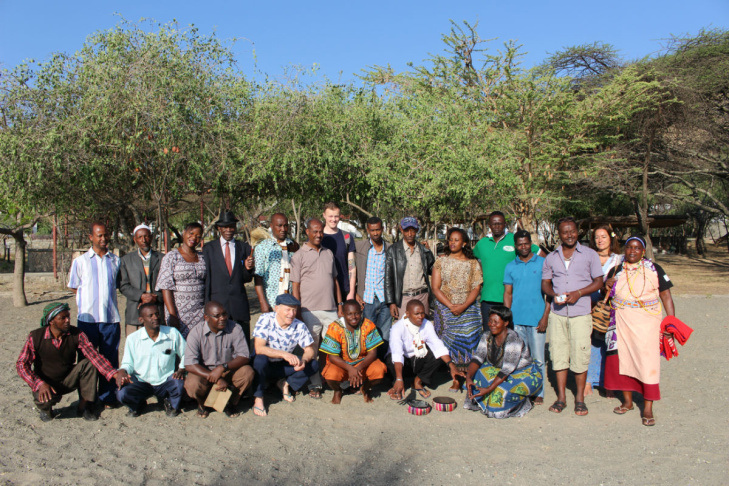
Meeting of sacred site custodians at Lake Langano, Ethiopia 2015 (Photo: The Gaia Foundation)
Benin is home to a network of sacred natural sites, known as Vodun zun, including over 2,940 sacred forests. In 2012, due in large part to the work of Indigenous-led organization GRABE-Benin, Benin set a new precedent by creating a ‘sacred forest law’ (Interministerial Order No.0121). The law formally protects sacred forests, recognizing their importance for biodiversity and ethno-cultural traditions.
Since that time GRABE-Benin has accompanied communities to apply for registration and legal recognition of their sacred forests as protected areas, as well as recognition of the communities’ rights to govern and protect them. By the end of 2013, a total of nine sacred forests had been formally protected.
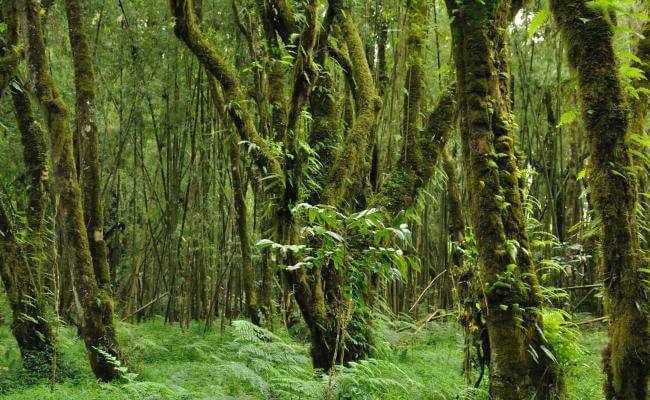
Sheka Forest (Photo: Will Baxter)
In the Sheka region of Southern Ethiopia, a region famous for rare afromontane forests, Shekacho communities have made great strides to protect the area’s 200+ sacred natural sites from threats such as deforestation.
With assistance from MELCA-Ethiopia, a local NGO, the communities have begun to revitalize their traditional culture, and clans have united to seek protection for sacred sites. As a result of these efforts, Sheka Forest was recognized as a UNESCO Biosphere Reserve in 2012. Since then, the regional government has issued a regulation for the protection of the Sheka forest Biosphere Reserve.
These successes are part of a wider process of Indigenous cultural revival under way across Africa. The report describes how communities such as those in Sheka and Benin are coming together to rebuild their cultural identities and customary governance systems. In doing so, they are challenging dominant legal systems that continue in the colonial vein of legitimizing eco-cultural destruction, rather than preventing it.
A new film from the report’s authors provides greater insight into this ongoing revival. In the film, Method Gundidza of the Mupo Foundation (South Africa) describes the critical importance of customary governance at a time of multiple eco-social crises:
“We are saying that law should derive from nature. And if law should derive from nature, customary governance systems are the law. This is where it (law) should come from. These are the (Indigenous) people whose day-to-day lives reflect how to live with nature and how to care for nature.”
The custodians and their supporters now hope their statement will impress this key insight upon the African Commission and inspire them to action. In the meantime, they will continue with their quiet revolution.
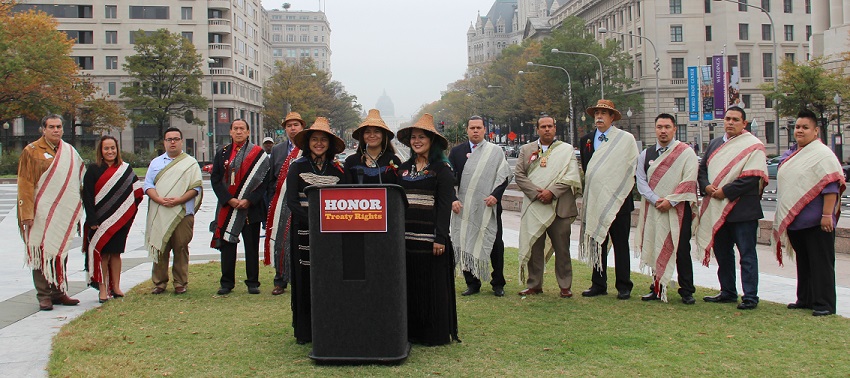
by DGR Colorado Plateau | Nov 19, 2015 | Indigenous Autonomy, Protests & Symbolic Acts
Lummi tribal leaders and members gathered last Thursday in Washington, D.C. to express concerns about treaty violations related to the proposed coal terminal and train railway for Cherry Point, Washington.
In addition to the Lummi Nation, tribal members and leaders from the Tulalip, Swinomish, Quinault, Lower Elwha Klallam, Yakama, Hoopa Valley, Nooksack and Spokane nations were in attendance.

Chairman of the Lummi Nation Tim Ballew II expressed his concerns last Thursday in Washington, D.C. to express concerns about treaty violations related to the proposed coal terminal and train railway for Cherry Point, Washington.
Chairman of the Lummi Nation Tim Ballew II came to the podium and told attendees and news crews that the 1855 U.S. treaty with Pacific Northwest Native American tribes, and associated rights for the fishing, hunting and sacred grounds was in jeopardy.
“We’re taking a united stand against corporate interests that interfere with our treaty-protected rights,” said Tim Ballew II, chairman of the Lummi Indian Business Council. “Tribes across the nation and world are facing challenges from corporations that are set on development at any cost to our communities.”
According to a release, for three years, Northwest treaty tribes, including Lummi Nation, Swinomish Indian Tribal Community, Tulalip Tribes, and Yakama Nation, and the Columbia River Intertribal Fisheries Commission have provided government agencies and elected officials detailed letters identifying the impacts the terminal would have on treaty fishing rights, the environment, natural resources and the health of Washington.

Lummi tribal members and sisters Billy Kennedy Jefferson, 18, Danielle Kennedy Jefferson, 16, and Kathrine Jefferson, 15, all from the Lummi Nation in western Washington state Photo: Vincent Schilling
Additionally, the Affiliated Tribes of Northwest Indians, representing 57 tribes, has taken action to oppose the increased transport of unrefined fossil fuels of coal, Bakken shale oil, and tar sand oil across the Northwest. The proposed Gateway Pacific Terminal would impact thousands of acres of treaty land and fishing along the rivers and mountains. Tribes across the Northwest have concluded that the impacts of significant increases in rail and vessel transportation cannot be mitigated to any level that would protect tribal treaty rights.
The proposed Gateway Pacific Terminal (a subsidy of SSA Marine) would serve as a gateway to markets in domestics companies and Asia. The terminal would handle 60 million tons of commodities, mostly coal – but the project’s location includes Lummi ancestral burial sites and ancestral fishing grounds.
“The location of the pier will take away fishing grounds and the increase in vessel traffic would impede access of our fishermen to fishing grounds throughout our usual and accustomed areas.”
“We soundly reject developments that desecrate our sacred places and call on Congress to uphold our treaty-protected rights,” said Ballew.
“I credit the current administration for every year building on our efforts to help us rebuild our nations and I encourage them to continue that,” Ballew said. “We really want them to give this issue its due respect. It’s a human rights issue, it’s a treaty rights issue, and we need our sacred sites protected.”
“For thousands of years, Washington tribes have fought to protect all that is important for those who call this great state home. We live in a pollution-based economy and we can no longer allow industry and business to destroy our resources, water and land. No mitigation can pay for the magnitude of destruction to treaty resources for today and generations from now. As leaders, we need to protect our treaty resources, our economies, and the health of our citizens and neighbors.” said Brian Cladoosby, Chair, Swinomish Indian Tribal Community and president of the National Congress on American Indians in DC.
“The ancestors of all, Native and non-Native, witness those who have lost their integrity; the people of the present acknowledge as much; and the future generations will ask ‘Why did those ones who did not honor their own words allow it to happen?’ The past is the present and the future is now. The treaty is their word, our people trusted that word. Now, it seems to be just words. Do they lack the honor and integrity of their ancestors?” said Dave Brown Eagle, Vice-Chair, Spokane Tribal Business Council.

Dave Brown Eagle, Vice-Chair, Spokane Tribal Business Council at the White House Tribal Nations Council last week. Photo: Vincent Schilling
“Our treaty rights are not for sale. The Gateway Pacific Terminal project threatens our treaty-reserved rights and we do not support actions that would compromise or diminish the resources for which our ancestors sacrificed so much. There is no mitigation for the loss of our way of life or culture,” said Melvin R. Sheldon Jr., Chair, Tulalip Tribes.
“This issue affects all of us, we’re connected in ways that the U.S cannot even imagine,” said Tyson Johnston, Vice-President of the Quinault Indian Nation.
The project is currently under review by the Seattle district U.S. Army Corps of Engineers. The State of Washington Department of Ecology has an environmental review listed here.














